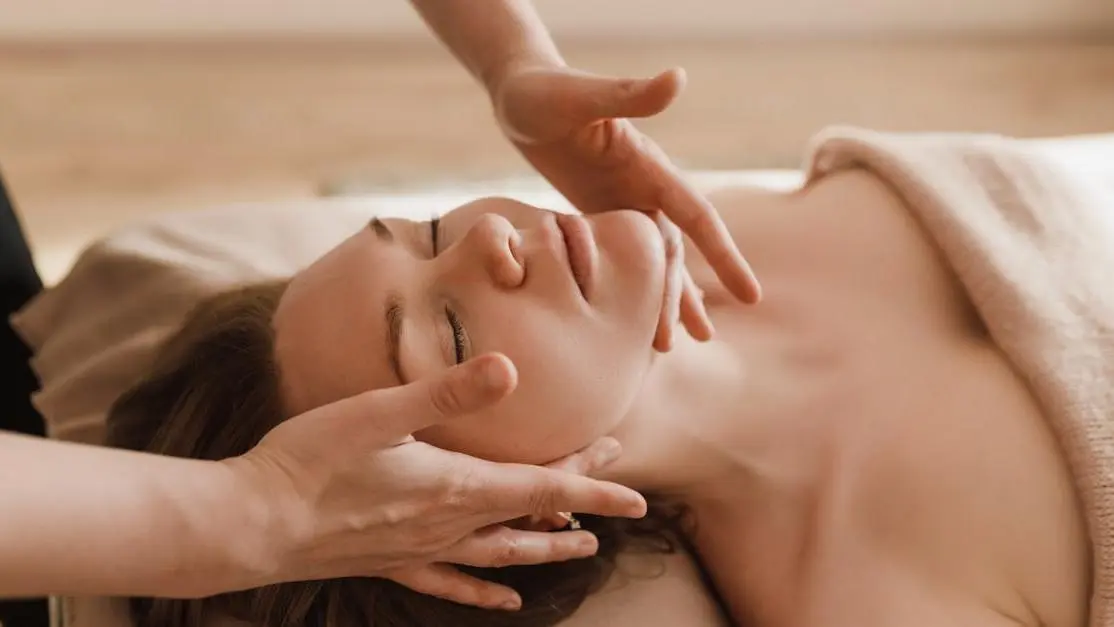TMJ therapy options range from simple lifestyle changes to advanced medical treatments, aimed at reducing jaw pain and improving mobility.
Non-invasive methods include physical therapy exercises, bite guards, and medications like anti-inflammatories and muscle relaxants. For persistent issues, advanced therapies like TMJ arthroscopy and TENS might be considered. Explore these strategies to find the right TMJ solution for comfort and relief.
Looking for TMJ pain relief? Discover our effective TMJ therapy treatments.
Understanding TMJ Disorders
The temporomandibular joint (TMJ) acts like a sliding hinge, connecting your jawbone to your skull. Located on each side of your head, this joint allows you to perform essential functions such as chewing, talking, and yawning. However, when this joint or the muscles surrounding it experience dysfunction, you might face a condition known as a TMJ disorder. Recognizing TMJ disorders can be crucial to understanding and managing the discomfort they cause.
Common Symptoms of TMJ Disorders
When it comes to identifying TMJ disorders, the symptoms can be broad and affect different areas around your head and face. You might experience:
- Jaw Pain: Often, discomfort or tenderness around the joint is the most prevalent symptom.
- Difficulty Chewing: You may notice challenges or pain while chewing or biting.
- Lockjaw: Locking of the jaw, making it difficult to open or close your mouth.
- Audio Symptoms: A clicking or popping sound when you move your jaw, although this might not always be painful.
- Facial Pain: Generalized pain radiating in the face, neck, or shoulders.
Impact on Daily Life
TMJ disorders can profoundly affect daily activities. From hindering speech to causing anxiety due to persistent pain, the disruption can be notable. If left untreated, these symptoms might escalate, impacting quality of life and leading to further complications. Therefore, understanding these symptoms and their effects is the first step toward exploring effective TMJ therapy options.
Causes of TMJ Disorders
Pinpointing the exact cause of TMJ disorders can sometimes be elusive. However, numerous factors contribute to the onset and progression of these conditions. Understanding these can guide you toward appropriate treatment paths.
Physiological Causes
- Arthritis: Osteoarthritis or rheumatoid arthritis can lead to deterioration in the TMJ.
- Jaw Injuries: Physical trauma to the jaw, either from an accident or direct impact, often results in TMJ problems.
- Misalignment: Irregularities in the alignment of teeth or jaw structure, sometimes arising from genetic predispositions, can lead to TMJ stress.
Behavioral and Environmental Factors
- Bruxism: Grinding or clenching your teeth, often occurring during sleep, wears down the joint and muscles, leading to TMJ disorders.
- Stress: High-stress levels can cause tension in the jaw muscles, exacerbating TMJ disorders.
- Lifestyle Choices: Habits such as chewing gum excessively or poor posture can put additional pressure on the TMJ.
By identifying these factors, you can take proactive steps toward preventing or mitigating the severity of TMJ disorders.
Non-Invasive TMJ Therapy Options
When addressing TMJ disorders, many effective non-invasive therapy options can relieve your symptoms without surgical intervention. These therapeutic methods focus on alleviating pain and improving jaw mechanics while embracing a holistic approach.
Physical Therapy and Exercises
Engaging in physical therapy and targeted exercises is a foundational non-invasive TMJ therapy option. These exercises aim to strengthen and relax the jaw muscles, improving your joint’s range of motion and reducing strain. Consider incorporating:
- Relaxed Jaw Exercise: This involves placing your tongue on the roof of your mouth while gently opening and closing your mouth.
- Chin Tucks: This simple exercise can help correct posture and reduce strain on the TMJ structures.
Lifestyle Modifications
Adopting specific lifestyle changes plays a crucial role in managing TMJ disorders. These modifications can significantly reduce the frequency and intensity of symptoms:
- Stress Management: Embrace meditation, yoga, or other relaxation techniques to alleviate stress-related tension in the jaw.
- Dietary Adjustments: Opt for softer foods that require less chewing, minimizing pressure on your TMJ.
Use of Bite Guards
Custom-fitted bite guards, or splints, are effective tools. They prevent teeth grinding and clenching during sleep, thus reducing stress on the jaw joint. By evenly distributing the pressure across your jaw, these devices can ease discomfort.
Non-invasive TMJ therapy can usher in significant improvements over time. With persistence and the right approach, you may find substantial relief from your TMJ symptoms without resorting to surgical means.
Medication-Based Treatments
In some cases, medication becomes an essential component of TMJ therapy options, offering relief from pain and inflammation associated with disorders of the temporomandibular joint. These medications can be valuable tools in your treatment arsenal when used in conjunction with non-invasive techniques.
Pain Relievers and Anti-Inflammatories
Over-the-counter pain medications, such as ibuprofen or acetaminophen, can address mild TMJ discomfort. For more persistent pain and inflammation, your healthcare provider might recommend stronger options, like prescription-strength NSAIDs. These medications work by decreasing inflammation, which in turn, reduces pain and swelling.
Muscle Relaxants
Muscle relaxants may be prescribed for short-term use, especially if your TMJ disorder involves muscle spasms. These medications help reduce tension and improve joint movement, enabling you to manage symptoms more effectively.
Antidepressants
Interestingly, certain antidepressants, particularly tricyclic varieties, have shown efficacy in treating TMJ pain. These drugs can offer pain relief, and for individuals with TMJ issues exacerbated by stress or sleep disturbances, they can also address underlying psychological components.
Incorporating medication-based treatments into your TMJ therapy regime can be highly beneficial for symptom management. Always consider discussing these options to ensure they align with your overall TMJ management plan.
Advanced TMJ Therapy Options
While non-invasive treatments offer relief for many patients, others might require advanced TMJ therapy options. These options provide solutions when traditional methods haven't adequately alleviated pain or improved jaw function. Exploring these alternatives can open doors to more balanced and effective TMJ management.
TMJ Arthroscopy
TMJ arthroscopy is a minimally invasive surgical procedure that helps address persistent TMJ issues. Surgeons use a specialized instrument, the arthroscope, to perform procedures within the joint. This tool allows them to visualize the TMJ area, remove inflamed tissue, and make surgical corrections.
- Benefits: The less invasive nature leads to shorter recovery times and reduced postoperative pain compared to open-joint surgeries.
- Consideration: Your healthcare provider might suggest this if non-invasive treatments aren't providing relief and your symptoms persist.
Corticosteroid Injections
Corticosteroid injections directly target inflammation by delivering the medication into the joint. These injections can offer more immediate and localized relief from pain.
- Usage: This option usually comes into consideration if the inflammation within the joint is particularly severe.
- Effectiveness: Corticosteroids work relatively quickly, thus providing a significant reduction in inflammation and related pain.
Transcutaneous Electrical Nerve Stimulation (TENS)
TENS therapy involves using a low-voltage electrical current to alleviate pain. During a TENS session, electrodes are placed on the skin near your TMJ. This current stimulates nerve endings, potentially reducing pain and improving blood flow in the area.
- Advantages: TENS offers a non-surgical, non-pharmacological way to manage TMJ pain. Patients who prefer tactile treatment might find this method appealing.
- Clinical Applications: Often used in physiotherapy settings, TENS can be administered alongside other non-invasive methods for comprehensive TMJ therapy options.
With advanced options like these, individuals experiencing persistent TMJ issues have effective pathways to consider. Adopting the right blend of therapies can ensure you attain comfort, regain jaw function, and reduce chronic pain.
The Role of Painless Dentistry in TMJ Treatment
[[Painless dentistry](https://cookstowndentist.ca/effects-of-clenching-jaw-on-teeth/)](https://cookstowndentist.ca/) is revolutionizing how you approach TMJ treatment, bringing comfort and cutting-edge practices to the forefront of dental care. This patient-centric approach ensures that treatments for TMJ disorders are as comfortable as possible, minimizing apprehension and enhancing outcomes.
Techniques and Technologies
Painless dentistry incorporates various techniques to ensure comfortable treatment experiences. Advanced technologies redefine traditional dental practices, making them more efficient and less discomforting:
- Painless Injections: Specialized application techniques minimize discomfort for individuals receiving anesthesia.
- Sedation Dentistry: For patients with severe anxiety or discomfort in dental settings, sedation options enable a relaxed yet responsive experience.
- Quieter Dental Tools: New-generation tools reduce noise levels, which can alleviate stress associated with dental visits.
Benefits and Patient Comfort
Painless dentistry plays a pivotal role by prioritizing comfort throughout the TMJ therapy process. Emphasizing patient comfort helps reduce resistance to seeking treatment:
- Positive Experience: With minimized pain, patients are less anxious and more likely to adhere to proposed TMJ therapy options.
- Enhanced Recovery: Reduced stress and discomfort during procedures can lead to improved recovery times and outcomes.
Implementing painless dentistry techniques within TMJ treatments underscores the focus on patient comfort while ensuring effective therapeutic results. Exploring these innovations allows you to embrace TMJ treatments with confidence, fostering an optimistic approach to dental care.
When to Seek Professional Help
Recognizing when to seek professional TMJ therapy is vital for long-term health and well-being. Early intervention can prevent symptoms from worsening and facilitate more effective treatment.
Symptoms to Watch
Identifying key indicators can guide your decision to pursue professional help. Being proactive in seeking treatment ensures better management of TMJ disorders:
- Persistent Pain: If you experience ongoing or significant pain in your jaw, face, or neck that medical over-the-counter interventions cannot alleviate, scheduling a consultation could be beneficial.
- Jaw Mobility Issues: Difficulty in opening or closing your mouth, often signified by jaw locking, necessitates professional evaluation.
- Audio Symptoms with Discomfort: Clicking, popping, or grating sounds in your jaw, accompanied by pain, should be addressed with appropriate TMJ therapy options.
Importance of Immediate Action
Symptoms associated with TMJ disorders can escalate if not addressed promptly. Early professional intervention enhances chances of effective treatment and recovery:
- Efficient Management: Early diagnosis helps tailor TMJ therapy options that fit your specific condition, leading to quicker relief.
- Preventive Measures: Tackling issues early on can prevent the need for more advanced treatments in the future.
Staying observant and proactive about your symptoms will help you take diligent steps toward effective TMJ management. By identifying and responding to symptoms early, you position yourself for optimal outcomes in TMJ therapy.
Looking for TMJ pain relief? Discover our effective TMJ therapy treatments.

